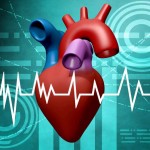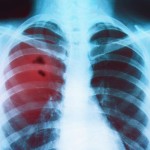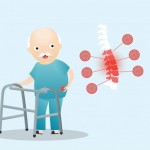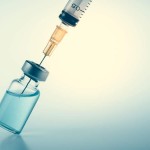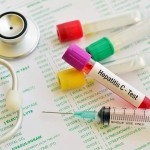Jaundice
Jaundice is a term used to describe the yellowing of the skin and the whites of the eyes.
Jaundice is often seen in liver disease such as hepatitis or liver cancer. It indicates obstruction of the biliary tract, for example in gallstones or pancreatic cancer. Jaundice can also occur as a result of any condition or disorder that disrupts the functions of the liver, such as sickle cell anemia, Gilbert’s syndrome or cirrhosis.
Blood is made up of hemoglobin in the red blood cells (RBCs). RBCs last for only about 120 days, after which they become fragile and are broken down into parts of the body such as the spleen. Among other things formed from the old hemoglobin is bilirubin. This is transported to the liver where a series of biochemical processes occurs before it winds up being excreted as bile. There are several ways that a build- up can occur:
If red blood cells broke down too early, the spleen gets overloaded and hence too much bilirubin is produced to be handled by the liver. Unprocessed bilirubin accumulates in the bloodstream and eventually the skin and eyes looks yellow. This condition is called hemolytic anemia. At times this condition is inherited. Hemolytic anemia may also occur as a side-effect of certain drugs.
Sometimes the trouble is in the liver cells. If there is a faulty uptake, processing or excretion of bilirubin which result in an accumulation of RBC’s in the bloodstream. Newborn babies can be temporarily jaundiced because of lack of mature enzymes needed to process bilirubin. In adults, alcoholism is a common cause of damage to liver cells. Other toxins and certain drugs can also cause acute damage to the liver.
A blockage in the bile duct can also result in a build-up of fully processed bilirubin. This can spill over into the urine and cause it to become very dark. The blockage is most commonly caused by a gallstone.
Symptoms
The main symptom of jaundice are:
Yellow discoloration of the eyes and of the skin
Pale colored stools (faeces)
Dark colored urine
Causes
Jaundice is classified into three categories, depending on which part of the physiological mechanism the pathology affects. The three categories are:
Pre hepatic: Pre hepatic jaundice is due to increased rate of haemolysis (breakdown of RBCs). Causes of haemolysis include:
• Malaria
• Sickle cell anemia
• Thalassaemia
• Gilbert syndrome
Hepato cellular: Hepato cellular jaundice can be due to any infection in the liver. It can be due to infection or exposure to a harmful substance, such as alcohol, disrupts the liver’s ability to process bilirubin.
Post hepatic jaundice: Post-hepatic jaundice, is also called as obstructive jaundice, is caused by an interruption to the drainage of bile in the biliary system. The most common cause is due to gallstone in the common bile duct or due to pancreatic cancer. Some underlying conditions that may cause jaundice are:
Acute inflammation of the liver - May impair the ability of the liver to conjugate and secrete bilirubin, resulting in a buildup of bilirubin.
Inflammation of the bile duct - May prevent the secretion of bile and removal of bilirubin, causing jaundice.
Obstruction of the bile duct - Prevents the liver from disposing of bilirubin, which results in hyperbilirubinemia.
Hemolytic anemia - Production of bilirubin increases when large quantities of erythrocytes are broken down.
Gilbert's syndrome - An inherited condition that impairs the ability of enzymes (biomolecules that provoke chemical reactions between substances) to process the excretion of bile.
Cholestasis- A condition in which the flow of bile from the liver is interrupted. The bile containing conjugated bilirubin remains in the liver instead of being excreted.
Diagnosis
Urine test: It is used to measure levels of a substance called urobilinogen. Urobilinogen is produced when bacteria break down bilirubin inside the digestive system.
Blood tests: Blood tests include blood levels of enzymes found primarily from the liver, such as the aminotransferases (ALT, AST), and alkaline phosphatase (ALP), bilirubin (which causes the jaundice), and protein levels, specifically, total protein and albumin.
Other primary lab tests for liver function include gamma glutamyl transpeptidase (GGT) and prothrombin time (PT).
Treatments
There's no treatment for jaundice as such, but disease can be managed by managing symptoms and causes of jaundice.
Pre-hepatic jaundice
In treating pre-hepatic jaundice, the objective is to prevent the rapid breakdown of red blood cells that's causing the level of bilirubin to build up in the blood.
In cases of infections, such as malaria, the use of medication to treat the underlying infection is usually recommended. For genetic blood disorders, such as sickle cell anemia or thalassemia, blood transfusions may be required to replace the red blood cells.
Gilbert's syndrome doesn't usually require treatment because the jaundice associated with the condition isn't particularly serious and doesn't pose a serious threat to health.
Intra-hepatic jaundice
In cases of intra-hepatic jaundice, there's little that can be done to repair any liver damage, although the liver can often repair itself over time. Therefore, the aim of treatment is to prevent any further liver damage occurring.
For liver damage that's caused by infection, such as viral hepatitis or glandular fever, anti-viral medications may be used to help prevent further damage.
If the damage is due to exposure to harmful substances, such as alcohol or chemicals, avoiding any further exposure to the substance is recommended.
In severe cases of liver disease, a liver transplant is another possible option.
Post Hepatic Jaundice
In most cases of post-hepatic jaundice, surgery is recommended to unblock the bile duct system.
During surgery, it might be required to remove:
The gallbladder
A section of the bile duct system
A section of the pancreas to prevent further blockages occurring
Preventions
Jaundice can be prevented by preventing the risk factors and causes associated with the disease like:
Moderate amount of alcohol
Maintaining healthy weight
Reducing risks of hepatitis B and C
References:
NHS
Centre of Disease Control and Prevention
WHO


